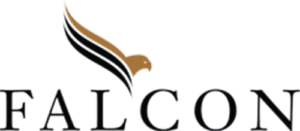Written by Mark Gaeto, Managing Director, with input from Jim Katzenberger
Mamma mia! This current environment is not for the faint of heart! Running an IT consulting firm in a time of shutdowns, social distancing and remote consulting presents worrisome challenges to firms. In this article, I want to share some old and new practices CEOs are adopting to keep projects not just continuing but even expanding, in a way for them to compete and potentially take market share.
Several years ago, I led an SAP-implementation firm. The management team was close, all having known each other for several years. We held formal Quarterly Strategy Planning sessions and had multiple conversations about the business in between. We made a concerted effort to pick up on the weak signals, the storm clouds on the horizon that could have a material impact on our business model.
We identified five trends.
- The commoditization of skills.
- The commoditization of implementation methodology.
- Downward pressure on consulting rates.
- Consolidation of service providers.
- Excessive talent churn due to the “consulting lifestyle.”
As a result, the other partners and I developed the concept of a “software factory” or “configuration factory.” The basis of the idea was that we needed to implement a remote-consulting framework. Here I am talking about consulting—which required client interaction—and not software development or help desk support. The remote consulting framework we implemented had these objectives:
- Reduce the amount of travel for our ever-travelling employees;
- Allow some very talented consultants to work remotely, as they had personal issues that made them unable to do much, if any, travel;
- Manage the bench and increase our billable hours and therefore company utilization;
- Enable better onboarding of newly trained SAP consultants by allowing them to work in teams
- and be mentored by more senior consultants;
- Start with 10% of the workforce but not exceed 20%.
Since most of our employees were in the Philadelphia area, we could use our office as our shop floor for the software factory. We organized the space by certain project functions (Basis Technology, Business Analysis, Software Configuration, Integration, etc.). We always maintained consultants at the customer site to serve as the project managers, team leads or subject-matter experts. It was not perfect, but it worked—and provided us with a competitive differentiator. We did not have tools such as MS Teams or Zoom or GoPro cameras and other new technology. Our sexy tool of the time was email and speaker phones in conference rooms! We had no complaints from customers or partners, and our staff morale increased as many could now have periods of normal home life. Our utilization, and therefore our margins, tracked upward. After about eight or nine months of using this framework our firm was acquired, and we never got the chance to further refine or perfect the model. The buyer never fully understood large scale ERP projects and never embraced the software factory or remote-consulting concept.
Over the last several years the industry has adopted offshore work in the form of software development, application maintenance and help-desk functions. However, in the years since we built our model, I have not seen much progress in the remote-consulting idea being perfected. The use of video conferencing, conversation recording, project-management software and other forms of tech are allowing leaders within consulting companies to innovate in a way that may likely become the new normal for client engagement post Covid-19. Currently the need for remote consulting ranges from basic survival to competitive advantage. The CEOs that perfect this model and even create methods or IP around it will build long-term equity value.
“It is not the strongest of the species that survives, nor the most intelligent that survives. It is the one that is the most adaptive to change.”
- Charles Darwin
The point is, we did not have to change. We could have continued to run our consulting practice the way it was—the way “everyone else” did—and grow at a rate comparable to the industry growth rate. However, we chose differently. We chose to change our delivery model and, in doing so, we gave ourselves a “differentiator” which resulted in more attractive exit options.
Most organizations get to a market penetration and revenue level which mirrors the growth of the industry. They are growing about the same rate as the industry, and they “look like everyone else.” They have no identifiable differentiating aspects to their business and delivery model. In a high-growth industry, this can be seductive: the leadership can believe they are turning all the right dials and hitting all the right levers. In moderate- and slow-growth industries, you can always look at a few lagging competitors and think, “Well, at least I’m not them.”
Then a market disruption occurs—like Covid-19—forcing leadership out of their comfort zone and now forcing them to make decisions, decisions on which their survival may depend. The window of disrupting yourself has closed. Now it’s time to react, survive, and create a new plan, a more resilient plan.
How does a CEO of a software implementation or IT services company build value in this current environment? First, you must move from a strategic view to a day-to-day view of running the business. You must protect cash, as cash is your oxygen. Hopefully, you will receive a PPP loan. You must be intensely focused on cash in the bank, diligently collecting receivables, slowing down the payment of payables, quickly acting to cut costs and, if you can, doing all of this with minimal debt. Stay on top of every financial and operation metric, and drill into the ones that show trouble.
Second, engage with customers in a manner that builds strong links between all levels of your firm and the client organization. You have constraints as they also do, and understanding a client’s situation opens the door to problem solving and relationship building. Client engagement should also involve building rapport and long-term goodwill.
Keep selling! However, in today’s environment, you will need to alter your messaging and sales scripts. Measure sales activity weekly, i.e., the number of prospecting or outbound sales calls, appointments set and then held, presentations, demos, proposals, agreements, etc. Keep the activity up. Keep sales reps motivated and make sure they are relentlessly reaching out to customers and channel partners. This is not about having them sell hard. It is all about communicating, listening, problem solving. Beyond your sales team, build an “everyone sells” mentality. Everyone should be hunting for revenue opportunities.
Who is your Mr. Inside and your Mr. Outside? Mr. Inside makes sure work continues to get done: products shipped; project completed. Mr. Outside should be spending at least 75% of their time—virtually—with anyone who will “give you money”: customers, prospects, partners, banks, investors.
Clearly, you need to protect your best people, reach out to all employees, and keep morale up!
The above will get you through the storm. Longer term, the fundamentals of building company value remain the same. When the economy recovers, value-building activity for an IT consulting firm should be to:
- Drive gross margins to 50% or better, and EBITDA to 15% or more.
- Build IP. If you can, improve project accelerators and templates, tools and apps.
- Turn your proprietary intellectual property items into products that generate revenue and, specifically, recurring-revenue offering.
- Hire great people
- Successfully deliver results to your customers and in a manner which protects and grows margins.
While many believe there is ample time until the upturn arrives, there is no certainty. It is not too early to begin thinking about a recovery and any potential sources of advantage you can build. Can you get back to 2019 levels? Are there firms to buy? Can you divest a portion of your business to raise cash? Can you trade up and bring in new talent? Are there innovations which you can turn into strengths and products? Make certain that what you are doing presently will get your through the crisis. Be hopeful and, when we get out of this mess, be in a position to move from survive to thrive.
You likely started 2020 with a plan. What are you doing right now to gain clarity on the future? How are you adapting? Come Q3 and Q4, what will you be doing to get as close as possible to your January 1, 2020 plan.
You were forced out of your comfort zone—and you need to broaden your perspective and stress-test your ideas.
Pick up the phone and give me a call. I would gladly share my lessons learned and observations for surviving and growing in a disruptive market.
Mark Gaeto is a Managing Director with Falcon Capital Partners. Mark can be reached at 610-989-8903 or mgaeto@falconllc.com.
With Special Thanks to Jim Katzenberger. Jim is the Managing Director with The Accelerx Group.

